[et_pb_section fb_built=”1″ admin_label=”section” _builder_version=”3.22″][et_pb_row admin_label=”row” _builder_version=”3.25″ background_size=”initial” background_position=”top_left” background_repeat=”repeat”][et_pb_column type=”4_4″ _builder_version=”3.25″ custom_padding=”|||” custom_padding__hover=”|||”][et_pb_text admin_label=”Text” _builder_version=”3.27.4″ background_size=”initial” background_position=”top_left” background_repeat=”repeat”]
Whether Madrid has been your home for a while or your most recent destination for the start of university, you’ve probably already grasped the diverse and vibrant essence of this city—there really is something in it for everyone. Among the many day-plans available across the different barrios of Madrid, there is a particularly broad array of possibilities to explore the arts and culture.
It is no secret that Madrid houses some of the best museums in Europe; Museo Nacional del Prado, Museo Reina Sofía, and Museo Thyssen-Bornemisza are by far the best-known, both among locals and internationally. Together, the three of them form Madrid’s ‘Golden Triangle of Art’. While I would say it’s difficult (if not impossible) to visit them all in one day and fully appreciate their collections, they are conveniently in very close proximity to each other: all are situated on the Paseo del Prado.
Regardless of your knowledge or passion for art, it is quite probable that you’ll end up in the Golden Triangle at some point or another, given the museums’ historical and cultural magnitude—if not the lively atmosphere of their surrounding area, sandwiched between some of Madrid’s main landmarks (Retiro Park, Plaza de Cibeles, and Atocha station, to name a few).
However, once the main museums have been explored once and again, true art lovers might want to dig a bit deeper and experience Madrid’s art and culture from a less traditional perspective. If that sounds like you, it’s your lucky day—you definitely won’t run out of things to see. In order to start a truly immersive cultural journey here, let this serve you as a basic guide to some ‘back alleys’ of the capital’s art scene.
Museums Beyond the Golden Triangle
If spending hours among masterpieces in large, quiet rooms still sounds like your ideal art-viewing experience, the first alternative route you should walk down is definitely that of lesser-known museums.
Without straying far from the Golden Triangle giants, you will first come across CaixaForum. Known for its impressive vertical garden facade, this cultural space is often filled with interesting exhibitions that complement those of its neighbouring buildings. The image below was taken by me at CaixaForum’s Andy Warhol exhibition in 2018 — one of my personal favourites that have passed by Madrid. Keep an eye out for its future agenda, you will be pleasantly surprised (especially if you’re a fan of Surrealism)!
 Two other museums that you might not have heard of are Museo Sorolla and Museo Lázaro Galdiano — both at walking distance from IEU’s Madrid Campus. Museo Sorolla (named after Spanish painter Joaquín Sorolla) was originally the artist’s own house. Not only do you get to see the majority of his work in one space, but you can also take a walk through the artist’s beautiful garden, palace, collections, and personal history, with much of its original decoration left untouched—and all this for free if you’re a student! Meanwhile, Museo Lázaro Galdiano is literally across the street from university (you may have noticed a grand red building when crossing onto Serrano), and houses a rather unknown collection of Goya and Hieronymus Bosch paintings, among a great variety of other masterpieces that are definitely worth seeing.
Two other museums that you might not have heard of are Museo Sorolla and Museo Lázaro Galdiano — both at walking distance from IEU’s Madrid Campus. Museo Sorolla (named after Spanish painter Joaquín Sorolla) was originally the artist’s own house. Not only do you get to see the majority of his work in one space, but you can also take a walk through the artist’s beautiful garden, palace, collections, and personal history, with much of its original decoration left untouched—and all this for free if you’re a student! Meanwhile, Museo Lázaro Galdiano is literally across the street from university (you may have noticed a grand red building when crossing onto Serrano), and houses a rather unknown collection of Goya and Hieronymus Bosch paintings, among a great variety of other masterpieces that are definitely worth seeing.
Although these are my personal recommendations, honorable mentions also go to Museo La Neomudéjar (if you’re looking for unexpected, authentic, and avant-garde), as well as Museo Cerralbo and the Museum of Romanticism (if you’d prefer to get a good look of 19th century aristocratic lifestyle). Even then, the list is nowhere near exhaustive.
Gallery Hopping
Although galleries cannot compete with larger cultural institutions in terms of artwork volume and quantity, going gallery hopping is an entirely different—and equally as rewarding—experience. Madrid’s art galleries are quite varied in style, size, and location, but a great concentration of them can be found in Calle Doctor Fourquet. Walking down this narrow street in the heart of the city can make for an amazing self-guided tour: with more than ten galleries lined up one after the other, art can be found in every corner, plastered on every wall, and basically suspended in the air as you pass by. This was where our university’s IE Arts & Business Club held their first gallery walking tour, in an event by the name of Paseos Artísticos held last February. Take a look for yourself, and find artwork of every style, medium and region of the world; some of Madrid’s most traditional galleries, and many more young and experimental establishments; local experts, eager to explain and offer their fresh perspectives on the contemporary art market; and an amazing selection of lively Lavapiés terraces, where you can happily wrap up your evening with a drink.

An Old Tobacco Factory…
While the aforementioned spaces are usually free of mass-tourism, they might not be as ‘alternative’ as this guide advertised. However, the Tabacalera definitely is. Formerly a tobacco factory (operating from 1809 until 2000), the space was not converted into an arts centre until 2003, when Spain’s Ministry of Culture decided to take over. Now, it’s Madrid’s tunnelled temple of street art, with its walls covered by layers upon layers of local graffiti, and its ceilings echoing the sounds of local music shows. Over the years, it has evolved into a more curated space, but its unique atmosphere—vivid, culturally diverse, and community-led—still prevails.
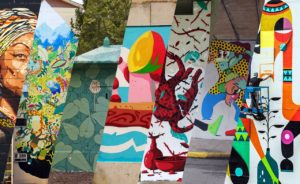
…And an Old Slaughterhouse (Yes, really…)
To continue on the theme of unlikely spaces turned cultural centres, one cannot overlook the Matadero. This spacious building complex, operating as a slaughterhouse and livestock market until 1996, is now an ever-changing and experimental venue. It holds temporary exhibitions, often including site-specific installation work, and always on the more contemporary side. Its purpose is to promote dialogue between the Arts; for this reason, its programme also includes screenings of film and documentary work, concerts, performances, and workshops of every kind. Visiting the Matadero will prove an amazing experience for anyone who enjoys culture, and particularly for those who enter with a curious and open mind.
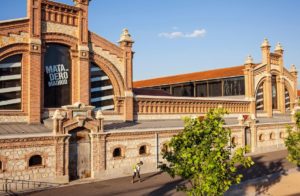

For the Film Lovers and the Free Thinkers
Regarding film, there are two must-sees. Firstly, Sala Equis, which roughly translates to ‘X Room’. This trendy space (built over Madrid’s last adult film theatre) really has it all: it’s a gastro-bar, a place for social gatherings, a space for performance art events, and a cinema. It’s the ideal mixture of culture and entertainment, and the perfect spot to get together with a group of friends for a fun evening.

Secondly, there’s Cine Doré: a beautifully-preserved 1920s cinema, which hosts screenings of classics as well as independent movies. Besides the building itself—which is an exciting experience on its own—two main things make Cine Doré unmissable. There’s the fact that its showings are in original version with subtitles (whether that is English, Spanish, French, you name it). Considering Spain’s tendency to dub everything, this is quite the plus, especially with their repertoire of international showings. If that isn’t convenient enough, there’s the price: you can get a standard ticket for only €2.50.
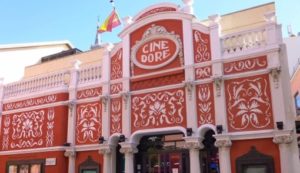
An Afternoon in Malasaña
Last but not least, Malasaña: the alternative neighbourhood that is loved by all visitors, and even more so by the locals. Its narrow, colourful and vivid streets are mostly known for their nightlife, but strolling through them in the daytime will be just as enjoyable for anyone with an artistic eye. You will not only find unique galleries, but also some of Madrid’s best street art. Wandering around might be the best idea if you want to make your own discoveries, but for a more guided experience you can book a street art tour or check out this handy guide to the most notable graffiti of Malasaña. In terms of galleries, a highlight of the area is La Fiambrera (translating to ‘The Lunchbox’). You will enter through the shop, which will already prove very tempting for art lovers, and you will go through to the back and down a stone stairway to find a series of exciting pop art, surrealism, and illustration art exhibitions. Once you take a look around and learn about their resident artists, the shop will be even more tempting on the way out.
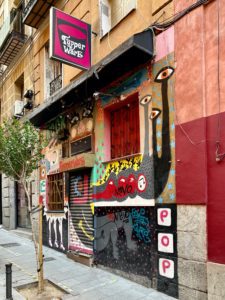
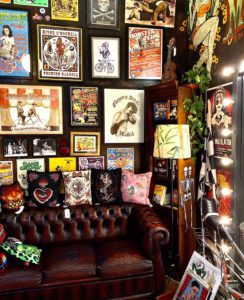
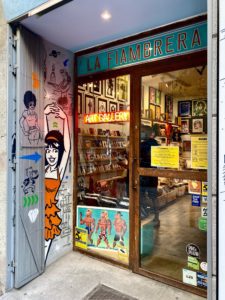
In summary, it can definitely be said that Madrid offers an endless stream of artistic experiences, with its varied museums, galleries and centres to be found in every corner the city. The formula to Madrid’s cultural scene is the following: world-class temporary exhibitions, plus timelessly-enjoyable permanent collections, plus thought-provoking contemporary spaces, plus authentically-local street art. As an art lover myself, I have compiled this article not so much as a factual tourist guide (here’s what there is to see), but more as a list of sincere recommendations (here’s what you’ll enjoy seeing). If you’re the same as me, hopefully this will have included a new discovery; if you’re curious about art but new to the city, I hope this will have painted an interesting, accessible and exciting picture of Madrid as a hub of culture.
______________________________________________________________________________________________
- Image 1: Personal Photograph
- Image 2: IE Arts & Business Club
- Image 3: https://www.murostabacalera.com/
- Image 4: https://www.traveler.es/experiencias/articulos/matadero-madrid-abre-de-nuevo/18333
- Image 5: https://www.hoyesarte.com/evento/darya-von-berner-le-hace-un-selfi-a-matadero-madrid/
- Image 6: https://elpais.com/ccaa/2017/12/19/madrid/1513712478_165647.html
- Image 7: https://elcultural.com/30-anos-de-cine-dore
- Image 8: Personal Photograph
- Image 9: Personal Photograph
- Image 10: Personal Photograph
[/et_pb_text][/et_pb_column][/et_pb_row][/et_pb_section]







